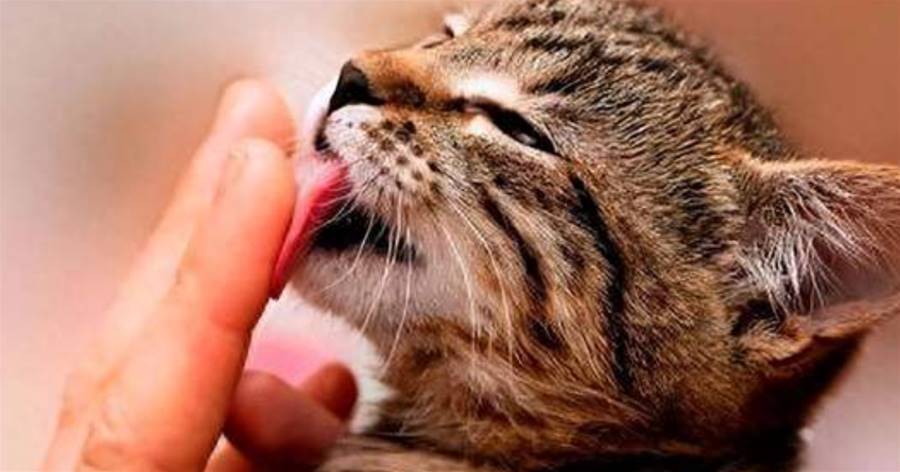
Cats may not speak our language, but they communicate through body language. Here are some behaviors that cats use to send signals and what they mean:


Behavior 1: Curling up Reason: When cats feel cold or lonely, they tend to curl up.
This is a signal from your cat that should not be overlooked. Solution: Check if the temperature in the room is too low. If it is, your cat may be feeling cold. If your cat seems sad or unhappy, try spending more time with it. Behavior 2: Bumping their head on you Reason: Cats do this when they are bored, feeling neglected, or need help. It's a way of getting your attention and showing affection.
Solution: If your cat bumps its head on you, check if there's something it needs your help with, such as cleaning the litter box or fetching a toy. If you have some free time, play with your cat to relieve its boredom. Behavior 3: Licking you often Reason: Cats lick humans for various reasons, such as apologizing, begging for food, or leaving their scent on you.
If your cat frequently licks you and then lies down, it's a sign that it loves you.
Solution: Pet your cat and respond to its affection. Let your cat know that you love it too.
Behavior 4: Scooting their bottom on the floor Reason: When a cat scoots its bottom on the floor, it may be a sign of blocked anal glands, not just for laughs. This behavior indicates discomfort, so it should not be ignored. Solution: Check your cat's anal glands and promptly seek veterinary attention if needed.
You can also help by gently squeezing the glands.
Behavior 5: Scratching often Reason: If your cat frequently scratches itself, it may be a sign of parasites or skin diseases. Don't ignore this, as it can cause discomfort to your cat and even transmit to humans. Solution: Regularly deworm your cat and check for any abnormalities in its skin. If the situation worsens, seek veterinary treatment. Behavior 6: Suddenly refusing food Reason: It could be due to illness or the cat not liking the taste of the food.
Solution: Observe if your cat is showing signs of illness. If not, it's best to take it to the vet for a check-up. If the issue is with the food, choose a high-quality cat food with good taste to increase your cat's appetite.


Behavior 7: Suddenly becoming aggressive Reason: It could be due to changes in the environment, threats from predators, or encountering something or someone that scares it. Solution: Calm your cat's emotions and help it resolve the problem. Use treats to divert its attention. Consider choosing freeze-dried meat treats as a reward. By paying attention to these behaviors and understanding their meanings, you can better communicate and care for your cat.
Cats may not speak our language, but they communicate through body language. Here are some behaviors that cats use to send signals and what they mean: Behavior 1: Curling up Reason: When cats feel cold or lonely, they tend to curl up. This is a signal from your cat that should not be overlooked. Solution: Check if the temperature in the room is too low. If it is, your cat may be feeling cold. If your cat seems sad or unhappy, try spending more time with it.


Behavior 2: Bumping their head on you Reason: Cats do this when they are bored, feeling neglected, or need help. It's a way of getting your attention and showing affection. Solution: If your cat bumps its head on you, check if there's something it needs your help with, such as cleaning the litter box or fetching a toy.
If you have some free time, play with your cat to relieve its boredom.
Behavior3: Licking you often Reason: Cats lick humans for various reasons, such as apologizing, begging for food, or leaving their scent on you. If your cat frequently licks you and then lies down, it's a sign that it loves you. Solution: Pet your cat and respond to its affection. Let your cat know that you love it too. Behavior
4: Scooting their bottom on the floor Reason: When a cat scoots its bottom on the floor, it may be a sign of blocked anal glands, not just for laughs. This behavior indicates discomfort, so it should not be ignored. Solution: Check your cat's anal glands and promptly seek veterinary attention if needed.
You can also help by gently squeezing the glands. Behavior 5: Scratching often Reason: If your cat frequently scratches itself, it may be a sign of parasites or skin diseases.
Don't ignore this, as it can cause discomfort to your cat and even transmit to humans. Solution: Regularly deworm your cat and check for any abnormalities in its skin. If the situation worsens, seek veterinary treatment.


Behavior 6: Suddenly refusing food Reason: It could be due to illness or the cat not liking the taste of the food. Solution: Observe if your cat is showing signs of illness. If not, it's best to take it to the vet for a check-up. If the issue is with the food, choose a high-quality cat food with good taste to increase your cat's appetite. Behavior
7: Suddenly becoming aggressive Reason: It could be due to changes in the environment, threats from predators, or encountering something or someone that scares it.
Solution: Calm your cat's emotions and help it resolve the problem. Use treats to divert its attention. Consider choosing freeze-dried meat treats as a reward. By paying attention to these behaviors and understanding their meanings, you can better communicate and care for your cat.




















